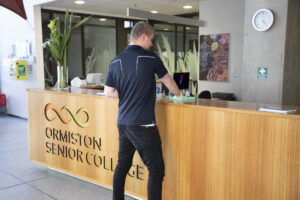The integration of technology into facility services has revolutionised how buildings are maintained, transforming traditional practices into efficient, sustainable, and cost-effective operations. This shift towards tech-driven maintenance not only enhances the efficiency of facility services but also significantly reduces their environmental impact. This guide explores the pivotal role technology plays in modern facility services, highlighting innovative solutions that are setting new standards in the industry.
Embracing Technology for Enhanced Facility Management
The adoption of technology in facility services represents a leap towards smarter, more responsive maintenance strategies. By leveraging tech tools, facility managers can achieve greater control over their operations, improve service delivery, and meet sustainability goals with unprecedented precision.
Advantages of Technology Integration
Key Technological Innovations in Facility Services
The rapid advancement of technology has introduced a range of tools and systems designed to optimise facility management.
IoT (Internet of Things) and Smart Buildings
- Smart Sensors: Deploy sensors throughout the facility to monitor conditions in real-time, from temperature to occupancy levels.
- IoT Devices: Utilise IoT devices to automate lighting, heating, cooling, and security, adapting to real-time needs and reducing waste.
AI and Machine Learning
- Predictive Maintenance: Implement AI algorithms to predict equipment failures before they occur, scheduling maintenance to prevent downtime.
- Energy Management: Use machine learning to analyse energy usage patterns, optimising consumption and reducing carbon footprint.
Building Information Modelling (BIM)
- Digital Twins: Create a virtual model of your facility to simulate and analyse operations, facilitating better planning and management.
- Lifecycle Management: Use BIM for comprehensive lifecycle management of buildings, from construction to renovation and demolition, ensuring sustainability at every stage.
Green Technology
- Solar Panels and Renewable Energy: Incorporate renewable energy sources into your facilities to decrease reliance on fossil fuels.
- Eco-Friendly Materials: Use technology to source and apply sustainable materials for construction and maintenance, reducing environmental impact.
Overcoming Barriers to Technology Adoption
While the benefits of integrating technology into facility services are clear, challenges such as cost, training, and scalability can hinder adoption. Overcoming these barriers requires a strategic approach, focusing on long-term benefits, phased implementation, and continuous staff training.
Implementing a Phased Technology Adoption Plan
- Start Small: Begin with pilot projects to demonstrate value and build a case for wider implementation.
- Scale Gradually: Expand successful technologies across the facility, adjusting strategies based on feedback and results.
Fostering a Culture of Innovation
- Training and Development: Invest in training for staff to ensure they are comfortable with new technologies.
- Stakeholder Engagement: Involve all stakeholders in the adoption process, from senior management to operational staff, ensuring buy-in and support.
The role of technology in modern facility services is transformative, offering a pathway to more efficient, sustainable, and cost-effective operations. By embracing technological innovations, facility managers can not only enhance the performance and longevity of their buildings but also contribute significantly to environmental conservation. As the industry continues to evolve, staying at the forefront of technological advancements will be key to achieving excellence in facility management.












